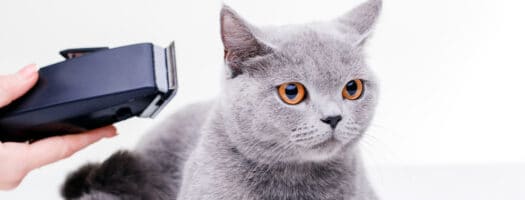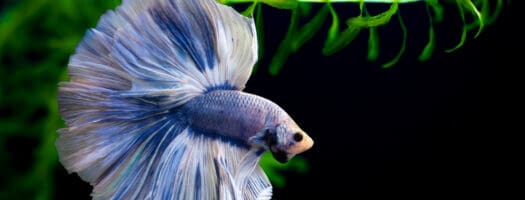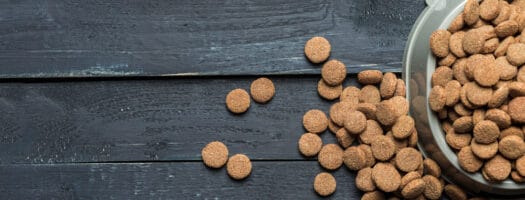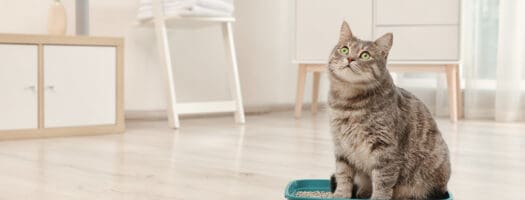The 11 Best Automatic Fish Feeders to Buy in 2025
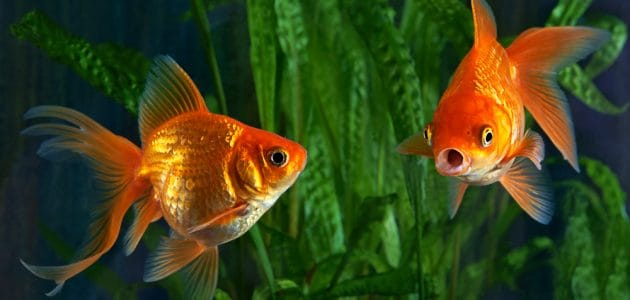
Fish are possibly the best living things you can choose to care for. They don’t talk, they don’t tear up furniture, and they certainly don’t soil the carpet. Fish add a mesmerizing ambiance to any room, and their low maintenance nature is only rivaled by house plants.
Although low-upkeep, you still have to make sure to take care of your fish. That means that along with occasional tank maintenance, you’re going to need to feed them at least once a day. Daily feeding is easy enough, but it makes spending extended time away from home a challenge.
Whether you’re looking to take a vacation, prevent an aquatic uprising from over or underfeeding, or simply trying to find an excuse to get your kids to stop complaining about feeding the fish, automatic fish feeders are a great addition to your aquarium. And don’t worry about doing any heavy lifting – we’ll guide you through the entire process.
- Do You Really Need an Automatic Fish Feeder?
- Things to Consider in an Automatic Fish Feeder
- Top 11 Best Automatic Fish Feeders 2025
- 1. Best Overall Automatic Fish Feeder: Eheim Automatic Feeding Unit
- 2. Best Premium Automatic Fish Feeder: Zacro Automatic Fish Feeder
- 3. Best Budget Automatic Fish Feeder: Jaok Automatic Fish Feeder
- 4. Best Vacation Fish Feeder: Kuiensi Automatic Fish Feeder
- 5. Best Underwater Fish Feeder: API Automatic Fish Feeder
- 6. Best Multi-Food Feeder: Eheim Twin Automatic Feeder
- 7. Fish Mate F14 Aquarium Fish Feeder
- 8. Proche Navi-E Automatic Fish Feeder
- 9. Best WiFi-Enabled Feeder: HDE Automatic Fish Feeder
- 10. Penn-Plax Daily Double II Automatic Fish Feeder
- 11. Bonus: Fish Mate P7000 Pond Fish Feeder
- Everything You Need to Know about Automatic Fish Feeders
- Wrapping Up
Do You Really Need an Automatic Fish Feeder?
Before you start swimming through the vast number of automatic fish feeders and their features that best suit your needs, you should make the most important consideration first: do you really need an automatic fish feeder?
There are a number of reasons you might want to purchase an automatic fish feeder. If you frequently travel, work a lot, or struggle with forgetting to feed your underwater friends, then an automatic fish feeder is a worthy consideration.
However, like most people, nobody will blame you for being mistrustful of a mechanical device that works on your behalf to feed your pets. Generally, automatic fish feeders are reliable. But in the off-chance that you encounter a clog or feeder malfunction and you don’t catch it soon enough, your fish could be, as they say, “swimming with the fishes.”
That’s why, if you plan to purchase an automatic fish feeder, we recommend doing supervised testing of your feeder before installation. It will save you from future frustration and ensure your fish stay happy and healthy.
Things to Consider in an Automatic Fish Feeder
With so many automatic feeders on the market, finding the right one can be difficult. Here are some considerations you should make when finding the right automatic fish feeder for you.
Type of Fish Feeder
Okay, so you’ve decided that an automatic fish feeder is what you need. Now you’ve got to make a choice: what kind of fish feeder do you need?
This is generally dependent on a number of factors: the size of your aquarium, how many fish you’re feeding, and the food you plan to use. There are four different types of automatic feeders to choose from: barrel, portion, stationary, and underwater feeders.
You can find more information on the different types of fish feeders here but they’re described in brief below:
- Barrel Feeder: Barrel feeders use a revolving barrel to drop food from above the tank periodically.
- Portion Feeder: Portion feeders use an internal mechanism to dose and drop a hand-portioned dose of food into the tank.
- Stationary Feeder: Stationary feeders are simple and push a small amount of food out of a single hole over a fixed interval.
- Underwater Feeder: Underwater feeders are completely submerged and single-use, dissolving over time to release nutrients and food into the water.
Types of Food You’ll Use
The type of food you plan to use with an automatic fish feeder is perhaps the most important aspect in choosing an automatic fish feeder. Generally, automatic fish feeders will work with any type of dry food. However, both the type of feeder and the food can impact the feeder’s performance.
For example, particulate-sized granules typically don’t play well with barrel feeders without slight modification to the feeder, while flakes can present an issue with caking and clumping due to moisture.
For recommendations and more information on how different foods work with automatic fish feeders, check out our in-depth guide on each type of fish food for your automatic feeder.
Capacity
While the type of feeder and food are important to consider, the feeder’s storage capacity is an equally important consideration. Portion feeders are great for accurately dosing feedings, but have a limited capacity.
Meanwhile, barrel and stationary feeders typically have a larger capacity, making them great for holding food for longer periods. This is great if you frequently forget to feed your fish, travel a lot for work, or simply have a large tank. Capacity is typically measured in ml, and the larger the measurement, the more time you can go between change intervals.
Ventilation
Ventilation is an important feature for automatic fish feeders. Because feeders typically reside so close to open water, stray splashes and condensation from humidity can cause food inside the feeder to get wet, leading to caking, clumping, and food rot.
Power Source
Nearly every automatic fish feeder uses power to provide food for your fish. When selecting the right fish feeder for you, it’s important to consider how the feeder is powered. Generally, there are 3 ways to power an automatic feeder:
External Batteries
Feeders that use external batteries typically use AA or AAA batteries. You might consider using rechargeable batteries as a happy medium between regular battery and rechargeable models, and they’ll last longer as well. However, some manufacturers recommend against using rechargeable batteries.
Internal Rechargeable Batteries
Rechargeable fish feeders use an internal rechargeable battery. These usually typically work while plugged in as well, and utilize a micro-USB charging port.
Power Plug
Feeders that use a power plug as a means of powering the feeder are similar to rechargeable feeders, but have no internal batteries. This is not a common power source, and is typically reserved for higher-end feeders like the HDE Automatic Fish Feeder, which connects to WiFi and constantly needs power to operate effectively.
If you’d like even more information about what you should consider when shopping for an automatic fish feeder, please feel free to check out our more detailed considerations below.
Now that we’ve covered the basics, it’s time to get into the best automatic fish feeders in 2025.
Top 11 Best Automatic Fish Feeders 2025
1. Best Overall Automatic Fish Feeder: Eheim Automatic Feeding Unit
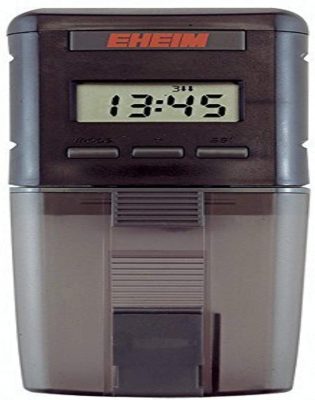
Editor’s Rating:
Why we like it: This feeder is made by an industry giant, has a unique ventilation system, and comes with a long 3-year warranty.
Quick Facts
- Feeder type: Barrel feeder
- Capacity: 100ml (approx. 1/2 cup)
- Uses ventilation: Yes
- Power source: 2 AA batteries
The Eheim Automatic Feeding Unit is a great everyday feeder, made by one of the largest fish tank accessory manufacturers in the world. It includes the 2 AA batteries the unit needs to operate, and utilizes a 2-stage low battery indicator to ensure your fish never go hungry.
One of the most attractive qualities of this Eheim feeder is that it includes a fan and ventilation system. This is something many other barrel feeders don’t include, and can help you keep your fish’s food dry and unspoiled between fills.
It also has a 3-year warranty, tied for the longest warranty available of all the automatic feeders featured on this list (its cousin, the Eheim Twin Automatic Feeder, and the Fish Mate P7000 Pond Fish Feeder both have long warranties as well).
Unfortunately, this feeder is not without its flaws. First, it’s one of the most expensive barrel feeders on the market, making it a poor choice for thrifty consumers compared to cheaper models like the Jaok Automatic Fish Feeder.
Eheim also makes one major oversight in the design of this feeder: while other barrel feeders, like the Jaok feeder, have multiple mounting options such as clamps or velcro, the Eheim auto feeder comes with none. Instead, the portion of the feeder containing the buttons, LCD, and motor is simply weighted so the feeder barrel can hang over the water.
This is great if you’ve got a tank that’s equipped with an always-open feeding hole, or another configuration where the feeder can sit above an open portion of the tank. However, the inclusion of an optional mounting clip would make this feeder more universally useful.
Still, given the effective ventilation system, long 3-year warranty, and solid construction, it sits at the top of the list as one of the best fish feeders you can find.
Pros
- One of the most durable feeders on the list
- Effectively utilizes ventilation
- 3-year warranty
Cons
- More expensive than other barrel feeders
- No clamp mounting
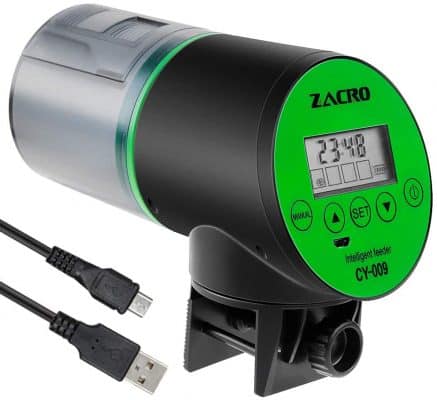
Editor’s Rating:
Why we like it: It's rechargeable, has multiple mounting methods, and even provides a short tutorial video to make programming easy.
Quick Facts
- Feeder type: Barrel feeder
- Capacity: 200ml (approx. 1 cup)
- Uses ventilation: No
- Power source: USB/rechargeable battery
The Zacro Automatic Fish Feeder is certainly a strong contender for our top pick. Similar to other barrel feeders in this style, it has a large 200ml storage container and allows you to provide 4 separate feedings per day. With up to 3 rotations per feeding, it’s especially useful if you have a large tank with lots of fish.
The Zacro feeder is easy to program, with a short video tutorial online, and runs on a rechargeable lithium-ion battery. The battery works up to 6 months per charge, and it is capable of handling 800 full charge cycles before you’ll need a new one.
It also has two options for mounting, using adhesive or a clamp. The clamp offers a nice touch, allowing you to rotate it 360 degrees, making it both versatile and easy to work with.
However, as with most barrel feeders, it’s not a great solution for smaller tanks with few fish. You can rectify this issue easily yourself, but you might find a good portion feeder to work better for small communities. It also doesn’t come with a USB wall plug adapter, meaning you’ll need to supply your own to charge the feeder.
Pros
- Video instructions for programming available online
- Built-in rechargeable lithium battery
- Works on battery or while plugged in
- Feeder rotates on clamp attachment
Cons
- Not suitable for small tanks
- Doesn't come with USB wall adapter
3. Best Budget Automatic Fish Feeder: Jaok Automatic Fish Feeder
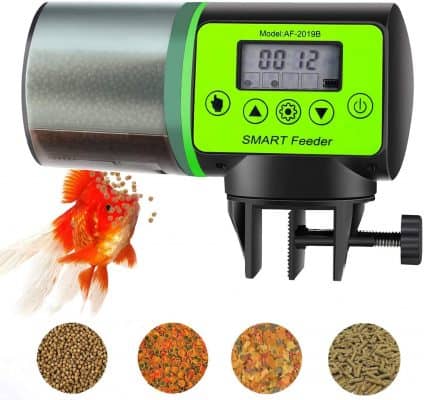
Editor’s Rating:
Why we like it: It's a great economical feeder that functions on par with other similar feeders.
Quick Facts
- Feeder type: Barrel feeder
- Capacity: 200ml (approx. 1 cup)
- Uses ventilation: No
- Power source: 2 AA batteries
The Jaok Automatic Fish Feeder is the most economical barrel feeder we’ve found, very comparable to other more expensive barrel feeders. This makes it a great choice if you’re on a tight budget or if you need to purchase multiple feeders without breaking the bank.
The Jaok feeder features a large 200ml food container and can provide up to 4 feedings per day. It also has multiple mounting methods via clamp or velcro. And while clamps are a common feature among barrel feeders, the use of velcro is not.
This means that, unlike other feeders that utilize adhesive strips, you can easily remove the feeder from its base and replace it without having to replace the adhesive strip as well. A rotating clamp base would make the Jaok feeder even more versatile, but perhaps that’s reserved for more premium models.
Like many other battery-operated models, it also requires 2 AA batteries to operate, and touts a long battery life of 3 to 6 months. However, you’ll certainly want to replace the batteries with name-brand batteries. The batteries that come with this feeder are cheap and won’t last as long as the touted 3-6 months Jaok claims.
Pros
- Choose between adjustable clamp and velcro installation
- Cheaper than other comparable feeders
- Battery life lasts 3-6 months
Cons
- Included batteries don't last long
- Clamp base doesn't rotate
4. Best Vacation Fish Feeder: Kuiensi Automatic Fish Feeder
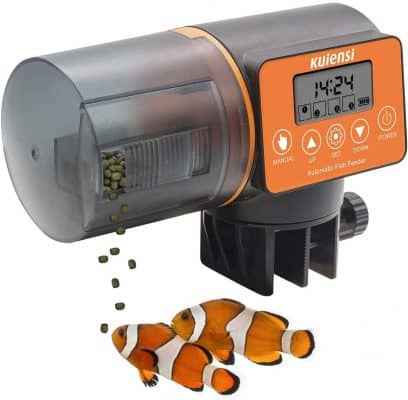
Editor’s Rating:
Why we like it: Despite being similar to other barrel feeders, it has a feeding door that works better than most for small portions and comes with a 1-year warranty.
Quick Facts
- Feeder type: Barrel feeder
- Capacity: 200ml (approx. 1 cup)
- Uses ventilation: No
- Power source: 2 AA batteries
The Kuiensi Automatic Fish Feeder is another great barrel feeder that you’ll love if you value portion control. Like many other barrel feeders, it has a large 200ml food storage capacity, multiple feed timers, and operates using 2 AA batteries.
However, what really makes this feeder stick out among the others is its food door and 1-year warranty. Featuring nine adjustment settings, it allows for a smaller opening, making it a better choice than other similar barrel feeders if you’ve got a smaller tank or use fine granulated food.
Additionally, it features multiple modes of installation (adhesive and clamp). Like some of the more premium barrel feeders, the Kuiensi feeder can rotate on its clamp, making it useful for nearly any setup, and generally easier to work with and clean.
The Kuiensi feeder does not come with the batteries it requires to operate, meaning you’ll have to source them yourself. There’s also an issue with the battery life of this model.
Many other comparable feeders, like the Jaok Automatic Fish Feeder, tout a battery life of 3 to 6 months. Meanwhile, this feeder only allows for 1 to 3 months of operation per set of batteries. Your batteries will outlast your business trip, but they might not outlast your pocketbook.
If you value better portion control over battery life, then this feeder might be for you. But there’s no denying more power-efficient feeders on the market exist.
Pros
- 1-year warranty
- 9 adjustment settings for better portion control
- Rotating clamp base
Cons
- Batteries not included
- Battery life is shorter than other comparable models
5. Best Underwater Fish Feeder: API Automatic Fish Feeder
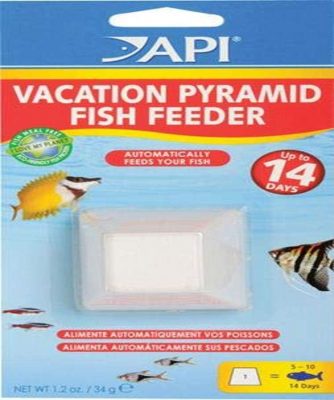
Editor’s Rating:
Why we like it: It doesn't get much more simple than this feeder. It also doesn't rely on power, meaning you don't have to worry about dead batteries or malfunctioning timers.
Quick Facts
- Feeder type: Underwater feeder
- Capacity: Up to 14 days of feeding
- Uses ventilation: No
- Power source: None
The API Automatic Fish Feeder is another feeder from an established brand with over 50 years in the aquatics industry. This feeder is doesn’t use any power or run on any timers, making it a great choice if you don’t like electronic feeders or their expensive price tags.
In fact, this feeder is nothing more than a small dissolvable brick containing pellets of fish food. That means you’ll find it easy to “set up” – drop it in and walk away. The feeder works with all common types of fish, from bettas and guppies to plecos and loaches. However, depending on the size of your aquatic community, it might not provide sufficient food for a full 14 days.
There are also a few prerequisites, aside from the number of fish in your tank. Since this feeder dissolves in the tank, it requires aeration and a filtering system. The aeration helps the pyramid dissolve in a timely manner, while the filtration ensures your tank doesn’t quickly dirty from the dissolved material.
That means it’s not suitable for fish bowls or tanks that don’t have aeration and filtration. You should also keep in mind, you have no control over the food you’re leaving your fish. If you’ve got your fish on a strict diet, you might want to consider another feeder for your holiday or vacation needs.
Pros
- Does not use power or timers
- Easy and instant setup
- Good for common fish of all types
Cons
- Single-use
- No control over type or portion of food
- Not for fish bowls and non-aerated or unfiltered tanks
6. Best Multi-Food Feeder: Eheim Twin Automatic Feeder
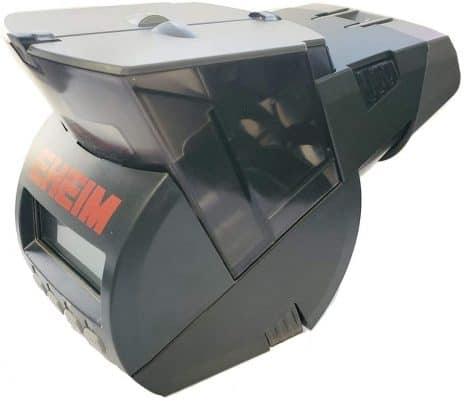
Editor’s Rating:
Why we like it: Unlike every other feeder here, this feeder can handle two types of food simultaneously, to ensure proper portions for everyone in your tank.
Quick Facts
- Feeder type: Stationary
- Capacity: (2) 80ml chambers (approx. 1/3 cup each)
- Uses ventilation: Yes
- Power source: 4 AA batteries
Another great automatic feeder from Eheim, their Twin Automatic Feeder is truly in a class of its own. This feeder is perhaps the most unique on the list, both because it’s one of two stationary feeders on the list, and because it can handle two different types of foods simultaneously.
Not only can it handle two different types of food, but both chambers have separate portion controls. That means if you have a large community with varying needs, you can appropriately feed your fish with different types of foods without worrying about inconsistent portions. For example, if you use flakes for your goldfish and guppies, and pellets for bottom feeders and shy mid-dwelling fish, you don’t have to worry about either going hungry.
Along with the aerated chambers, the food dispensers sit high above the base of the feeder. This means the dispensers stay out of range of random splashes, keeping food dry to prevent clumping, caking, and rotting.
Of course, it’s not without its flaws. One noticeable difference between this feeder and others is its size, being much larger than other automatic feeders. This means it’s not appropriate for all aquariums, as it – like the Eheim Automatic Feeding Unit – does not feature a mounting clamp or additional mounting hardware. Its large size also makes it rather unsightly.
Additionally, this unit being larger than others, it requires 4 AA batteries – twice the amount of batteries as other feeders. It does not include batteries, but given its price tag well above $50, that should be the least of your problems. That’s to say it’s expensive. In fact, it’s so expensive, you could likely buy 2 of almost any other feeder on this list and still spend less money than you would on this feeder.
Still, given its unique nature, flexibility for varied tanks, 3-year warranty, and durable construction, it certainly is a worthy consideration if you’re a serious fish enthusiast. And even if you’re not, you’ll likely find it useful for years after other feeders have kicked the bucket.
Pros
- Can handle 2 different types of food simultaneously
- Aerated food chamber to keep food dry
- Individually adjustable portions for each chamber
- 3-year warranty
Cons
- Bulky and difficult to set up
- Expensive
- Requires 4 batteries
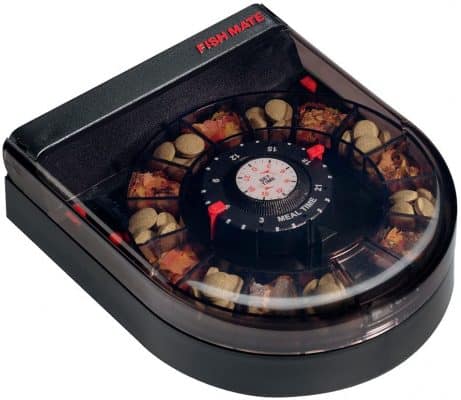
Editor’s Rating:
Why we like it: This feeder delivers food in customizable portions, making it great for fish bowls and small tanks with few residents.
Quick Facts
- Feeder type: Portion feeder
- Capacity: Up to 14 feedings
- Uses ventilation: Yes (optional)
- Power source: 1 AA battery
The Fish Mate F14 Aquarium Fish Feeder is another exceptional feeder from an established aquatics brand. Being the only portion feeder on the list, it’s got a set of unique benefits and drawbacks to it.
First, unlike many other electronic feeders that use digital timers, the F14 uses a reliable quartz timer. It essentially operates like an analog clock and uses pins as timers. This is beneficial because most digital feeders may lose their settings when the battery dies, whereas this feeder physically retains its settings, meaning no timing mishaps after battery or power outages.
Like other feeders, it can supply your fish with multiple meals per day. However, unlike other feeders, it also allows you to feed your fish every other day (by putting food in every other portion container). Coupled with the control it gives you over portion sizes, it’s a remarkable feeder for fish bowls and small tanks with few fish.
The F14 also comes with an optional airline slot, which is good for aerated tanks, as it will keep your food dry when the lid is closed. If you don’t have an airline, then you may find that you need to open the lid to prevent condensation in the food chambers. This is why we highly recommend doing thorough supervised testing with your feeder before leaving it alone for extended periods.
One of the major drawbacks of this feeder is that it’s not suitable for large tanks, unless you plan to purchase multiple feeders. As per the manufacturer, it’s suitable for tanks up to 150 liters, or roughly 40 gallons.
If you have a large tank or a lot of fish, you’re better off purchasing a barrel feeder like the Kuiensi model. But if you have a fish bowl or small tank with few fish, this is possibly the best feeder for your fish.
Pros
- Provides up to 4 meals per day
- Can feed every other day
- Optional airline compatibility
- Operates on a reliable quartz timer
- Single battery works for a full year
Cons
- Food may get soggy without airline attached
- Unsuitable for large tanks
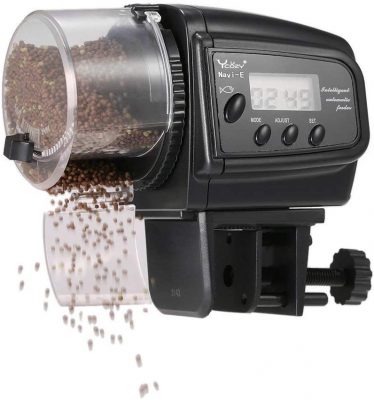
Editor’s Rating:
Why we like it: It's unique trapdoor and adjustable gear design helps keep moisture out and provide smaller portions than some barrel feeders.
Quick Facts
- Feeder type: Barrel feeder
- Capacity: 50ml (approx. 1/4 cup)
- Uses ventilation: No
- Power source: 2 AAA batteries
The Proche Navi-E Automatic Fish Feeder is another barrel feeder with a unique design. While other barrel feeders have a small sliding door that adjusts to attempt to portion your fish’s food, this one has an adjustable gear inside the food barrel.
The trapdoor on this feeder does not click shut, but rather, opens when the barrel rotates. As the barrel finishes its rotation, the door closes itself back up, keeping moisture out of the food compartment. However, as the trap door falls below the feeder, you should ensure that it’s placed high enough above the water to ensure the door doesn’t get wet.
This feeder operates on 2 AAA batteries and the manufacturer includes batteries to get you started. There’s no indication of how long the batteries should last, so if you’re leaving for an extended period, we recommend using fresh batteries prior to your trip until you’ve got a good idea as to how long they last.
Perhaps one of the biggest drawbacks of the Navi-E is that it’s difficult to turn off. If you want to skip a day’s feeding to give your fish a special treat, you’ll have to turn it off in one of two ways.
First, you can remove the feeder to access the battery compartment and pull the batteries out. If this is too much work for you, you can instead choose to delete your timers. Either way, this is a terribly poor design choice from the manufacturer, as a simple power button could mitigate this issue altogether and make the unit much more effective.
It does redeem itself with a 1-year warranty and its unique trapdoor design. Overall, it’s a worthy consideration and a good alternative to other barrel feeders if you’re concerned about portion control and moisture.
Pros
- Trapdoor design hinders food contact with moisture
- Includes batteries
- 1-year warranty
Cons
- Food door can get wet if set too low above water
- Difficult to turn off
9. Best WiFi-Enabled Feeder: HDE Automatic Fish Feeder
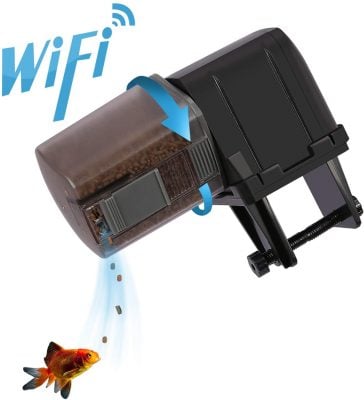
Editor’s Rating:
Why we like it: Being the only true “smart” feeder on the list means you can control this feeder via smartphone and utilize Alexa for voice control.
Quick Facts
- Feeder type: Barrel feeder
- Capacity: 100ml (approx. 1/2 cup)
- Uses ventilation: No
- Power source: USB power plug
The HDE Automatic Fish Feeder seems rather plain at first glance. Like many other feeders, it has multiple installation methods via clamp or adhesive. However, unlike other feeders, it doesn’t feature an LCD display or buttons. That’s because while other feeders brand themselves as “smart feeders” due to timing functionality, this feeder truly is a smart feeder as most understand it: WiFi capable.
The HDE connects to a smartphone app via WiFi, allowing you to control the feeding schedule from your phone. In case you’re curious, it works with both Android and iPhone, via the iLONDA app, or optionally the SmartLife app with Alexa integration. Not only does this mean you can change settings remotely, it also means that you can see if it’s working in the first place.
Since the HDE feeder doesn’t have buttons, it means you need to have WiFi and a smartphone to use the feeder. If you’re one of the few in the world that still doesn’t have both, then this feeder is certainly not for you.
The feeder is powered by a micro-USB cable. This is both good and bad: it means you don’t have to worry about dead batteries, but it also means it has to be plugged in all the time, as it doesn’t have an internal battery.
Another nice feature is the dispenser door. On the smallest setting, there is a divider that makes two holes, great for small granules, as it limits the amount of food dispensed. If you use large pellets or other large food, you might want to opt for another feeder, such as the Zacro Automatic Fish Feeder.
Finally, because the feeder utilizes WiFi and a smartphone, it introduces a plethora of new potential problems. As it turns out, you might not die without WiFi, but apparently your fish could if you’re out of town and your WiFi goes down. Regardless, it’s a nifty feeder for everyday use. Only use this if you have confidence in your network and its setup. We’d prefer more backup functionality, but at least with this feeder, you’ll know if something went wrong.
Pros
- Control schedule over WiFi with smartphone app
- Alexa enabled
- Handles fine granules and smaller portions well
Cons
- Doesn't seem to have an internal battery
- Won't work if you don't have WiFi/smartphone
- WiFi/phone controls add new problems unique to this feeder
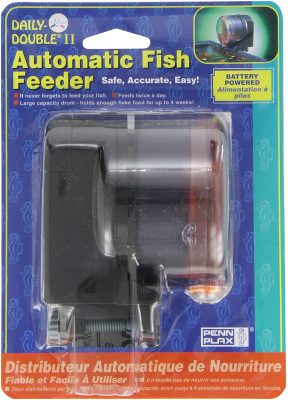
Editor’s Rating:
Why we like it: It's easy to setup and is the largest quartz timer-based feeder around, providing up to 4 weeks of food.
Quick Facts
- Feeder type: Barrel feeder
- Capacity: Unknown
- Uses ventilation: No
- Power source: 1 AA battery
The Penn-Plax Daily Double II Automatic Fish Feeder is another quartz timer-based fish feeder that provides up to 4 weeks of food. This feeder is certainly unique in its design, and is the only non-digital barrel feeder on the list. Because of this, it’s simple to set up: simply add food, insert the battery, and put it above your fish tank.
Like many other barrel feeders, you can clamp the Daily Double to the side of your tank or use it free-standing above the tank. However, you’ll want to ensure that the feeder is mounted at least a few inches above the water’s surface to prevent splashes or moisture from entering the feeder.
While mounting the feeder a few inches above the water is a general precaution for all feeders, it’s especially important for this one. Since it operates on a quartz timer, it means that the barrel rotates slowly as time passes, leaving the open feeding hole exposed towards the water for a longer period than other barrel feeders, a major humidity risk.
We also don’t love that you have no control over the timer or amount of times you can feed your fish per day with this feeder. With 2 adjustable feeding holes, it provides food once every 12 hours, which may be too much for smaller fish tanks with few fish.
If you’re looking for an exceptional barrel feeder, you might want to consider another like the Eheim Automatic Fish Feeder. However, if you want to forego dealing with digital feeders, but find that the Fish Mate F14 Aquarium Fish Feeder doesn’t provide ample time between refills, then this feeder is worthy of consideration.
Pros
- Very simple setup
- Provides up to 4 week’s worth of food
- Runs on a quartz timer
Cons
- No control over timer or feed frequency
- Food is susceptible to moisture exposure
11. Bonus: Fish Mate P7000 Pond Fish Feeder
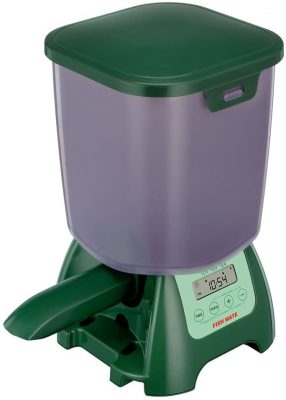
Editor’s Rating:
Why we like it: A great feeder with a massive capacity works for the largest aquariums and ponds of all sizes.
Quick Facts
- Feeder type: Stationary
- Capacity: 30 cups
- Uses ventilation: No
- Power source: 4 C batteries
For those of you with a fish pond or extremely large (300+ gallon) fish tank at home, the Fish Mate P7000 Pond Fish Feeder is a great choice. It features a large capacity 30-cup food container, capable of holding up to 6.5 pounds of food, and provides configurable feeding portions starting at 1 tablespoon per feeding, up to 3 feedings per day. All this means you can go up to a maximum of 90 days between refills.
The P7000’s LCD display is easy to read, even outside. One major benefit is its clock, which works in AM/PM mode, rather than military time like most other digitally-controlled feeders. You can also find instructions for the P7000 online, which is great if you lose the instructions that come with the feeder. You can also register the product online to take advantage of the manufacturer’s 3-year warranty.
Unfortunately, it comes with a few distinct drawbacks. First, it’s meant for pellets and sticks and is rather unsuitable for flakes. It’s also rather expensive, due in part to a lack of rivaling products and niche demand. These aren’t huge drawbacks, but they are worth considering.
However, its biggest drawback is its general lack of sturdiness in harsh climates and areas with problematic wildlife populations. The feeder, while marketed as weatherproof, can degrade in prolonged high heat and may suffer in extremely low temperatures during winter months.
Common opportunistic animals can also present a major problem. Since animals, such as small rodents, can tamper with the feeder, it can lead to accidental overfeeding, missing food, and even missing fish (for example, raccoons can trigger the feeder, drawing fish close to it for a quick and easy ‘sashimi-style’ dinner).
For its intended outdoor use, it’s easy enough to remedy the issue with a bucket and drill. But considering the high cost of this feeder, this is a problem the manufacturer should’ve considered when designing the feeder.
Nevertheless, it’s one of the best solutions available for ponds and huge aquariums, and will ensure your fish are fed when you’re not home.
Pros
- Large capacity
- AM/PM clock mode
- Instructions available online
- 3-year warranty (requires registration)
Cons
- Unsuitable for flakes
- Expensive
- Not sturdy enough for outdoor use
Everything You Need to Know about Automatic Fish Feeders
While we covered a lot in the beginning of this guide to help you make an informed choice, there are a few more considerations you should keep in mind. Before you pull the trigger on any one product, make sure you have all the information that will help guide you to the perfect product.
Different Types of Automatic Fish Feeders
There are 4 distinct types of automatic feeders, each with their own benefits and drawbacks.
Barrel Feeders
Barrel feeders are the most common type of fish feeders on the market. They feature an internal motor and a feeding container that rotates to dispense food to your fish. They often feature adhesive or clamps to secure them on the top or to the side of your tank.
If you have a lot of fish in a large tank, or if you’re going away for extended periods of time, then a barrel feeder is probably what you want. However, barrel feeders are sometimes problematic, particularly with certain types of food, so you’ll want to keep that in mind.
Portion Feeders
If you’re stringent about portion control, or have a small tank with few fish, portion feeders are an optimal choice. Portion feeders work great for fish bowls and small tanks, but they’re a poor choice for large tanks.
They also cannot provide feedings for as long as barrel feeders. This means if you’re planning a trip lasting more than two weeks, you should consider using another type of feeder.
Stationary Feeders
Much less common than barrel feeders, stationary feeders are feeders that do not feature external moving parts. Instead, the moving parts are inside the feeder, and typically push food out of the dispenser hole.
They typically hold up against moisture better than barrel feeders, but they’re not immune to moisture problems. Feeders like the Eheim Twin Automatic Feeder work with all types of food, while others like the Fish Mate P7000 Pond Fish Feeder work better with pellets and sticks.
Underwater Feeders
Underwater feeders are a unique type of feeder that don’t use power or any kind of mechanical parts. Instead, they are blocks of dissolvable material with food embedded in them. Underwater feeders have distinct advantages and disadvantages over other types of feeders.
The advantages of underwater feeders are that you don’t have to worry about powering them, or unreliable mechanical parts malfunctioning. They’re also the easiest of all types of feeders to use, as you simply put them at the bottom of your tank and let the water do the work.
On the other hand, the main disadvantage of underwater feeders comes in the form of tank requirements. You’ll need a tank that utilizes aeration and filtration, meaning they’re not good for fish bowls or unfiltered tanks. You also cannot control what types of food they use, they’re single-use, and water hardness can impact the rate at which the block dissolves.
A Note on Ventilation
Despite the importance of ventilation, many automatic fish feeders do not actually provide ventilation within the food chamber. In fact, only three feeders on our list offer a proper means of ventilation:
That doesn’t disqualify non-ventilated options from usage, but remember to watch out for humidity and mold, cleaning periodically if you select one of the non-ventilated options available.
Consider the Type of Food You’ll Use
The type of fish food you plan to fill your fish feeder with is perhaps the biggest consideration to contend with when purchasing an automatic feeder, and can using the wrong food can greatly hinder the performance of nearly any automatic device.
Flakes
Fish flakes are the most common and well-known type of fish food on the market. Even if you’ve never had a fish before, you’ve likely heard of fish flakes.
Flakes are often the cheapest and most widely available type of fish food on the market. They’re optimal for top-feeding fish, and great for fish with small mouths. However, they aren’t a great choice for bottom-feeders.
Of all types of fish food available, flakes are the quickest to dissolve. Because flakes quickly dissolve, they lose nutrients quickly, and can easily muck up your aquarium’s water. They can also cause your fish to swallow air while feeding, potentially leading to a swim bladder disorder.
Flakes are also notoriously known as being the most finicky type of fish food for automatic fish feeders. As dry fish flakes collect moisture from stray splashes and accumulating humidity, the food can become sticky. This leads to the food caking to the storage apparatus or clumping and blocking the feeding hole, presenting a potential danger to your aquatic friends by cutting off their food supply.
Even if you pick a feeder that aptly utilizes ventilation, sticking and clumping can still present itself as a problem with flakes. For this reason, we recommend you consider switching from flakes to crisps or pellets as the best way to combat this issue, especially if you’re set on the idea of using a barrel feeder.
If you’d rather stick with flakes, we recommend using a good portion feeder, such as the Fish Mate F14 Aquarium Fish Feeder, which will allow you to not only prevent clumping and sticking, but also accurately gauge each dose of food.
Crisps
Fish food crisps are chip-like pieces of fish food, similar to flakes, but in a denser form. They’re often referred to as the middle ground between flakes and pellets.
Compared to flakes, they provide the benefits of floating for longer and not dissolving as quickly. This means that – unlike fish flakes – they retain nutrients longer and make for cleaner feedings. They typically float longer than pellets, thus proving favorable with smaller fish that have a hard time with pellets.
In addition to being more nutritious and cleaner for your tank than flakes, crisps are more resilient to moisture. This makes them a great alternative to flakes in an automatic feeder. You can easily break them down into smaller pieces to avoid clogging the dispenser, and you don’t have to worry about clumping from the ambient humidity near the feeder.
However, crisps have two significant drawbacks compared to flakes and pellets. First, if you’re a thrifty shopper, you might find crisps aren’t economical enough compared to cheaper flakes and pellets. Size is another issue with crisps.
Whereas flakes are easy for your fish to eat, and pellets come in many sizes, crisps don’t afford quite the same variety. Fixing this is easy enough. You can simply break the crisps into smaller pieces for smaller fish, but it means you’ll spend more time prepping your feeder than simply tossing them in.
Pellets
Fish food pellets are another common type of food, found in many forms and prices. Not only are there a variety of sizes – from particulate-sized granules to large pellets for bigger fish – but there are three distinct types of pellets: floating, slow-sinking, and fast-sinking. They’re great for fish of all types and sizes, from top-feeders to bottom-feeders, and have a longer shelf life than flakes.
Pellets also dissolve slower than flakes and crisps, giving everybody in your fish tank ample opportunity to gobble up the food before it dissolves. Like crisps, they also work better with most automatic feeders than flakes do, and won’t clump or cake inside the feeder from humidity.
With that said, pellets have their own drawbacks compared to flakes and crisps. Fish that aren’t introduced to pellets early enough in their life can show resistance to pellets. You can fix this issue by making your fish fast for a few days, but it’s worth knowing if you aren’t already feeding your fish pellets.
Pellet size may also impact the performance of your feeder. Large pellets can lodge themselves in the dispenser hole on some feeders, causing the feeder to clog. Small granular and particulate-sized pellets also present a risk of accidental overfeeding in some types of feeders. You can easily remedy the latter of these two issues yourself, but it’s worth weighing these drawbacks.
Since different types of fish may require different types of food, you also have to be mindful of the type of pellets you’re using. For example, plecos are bottom-feeding fish, while guppies are top-feeders. They mix well together in a tank, but making sure you’re getting sufficient nutrition to everyone in your tank might require a combination of floating pellets and fast-sinking pellets.
While portion feeders can handle this issue easily, barrel feeders do not guarantee consistent distribution of multiple types of food. If you have a tank with a diverse community of fish with different dietary needs, you might want to consider using the Eheim Twin Automatic Feeder, or purchasing multiple feeders if you’re planning to use a barrel feeder.
Setting up an Automatic Fish Feeder
Your fish feeder of choice will come with specific instructions on how to set it up. However, we have some tips and tricks to help you get the most out of your automatic feeder.
Do Supervised Tests on Your Feeder
The first rule of automatic fish feeders is test, test, test! You want to make sure that the food you choose to give your fish will play nicely with the feeder. Unless you choose a portion feeder, you’re going to want to gauge how much food each feeding will provide before you attempt to install it.
To do this, simply fill the feeder and temporarily mount it to something. Using a few bowls, let the feeder dispense food into each bowl once. The more times you do this, the more you can accurately measure the feeder’s consistency to make necessary adjustments.
Once you’re convinced your feeder works consistently and you install it on your tank, you’ll want to keep a close eye on the feeder for a few weeks. This is to not only ensure your feeder continues to work reliably, but to also guarantee clumping and clogging aren’t going to cause problems.
Keep Feeders High Above the Water
If your feeder is too close to the water, stray splashes from aerators and top-feeding fish can cause serious issues. If water manages to find its way into the food dispenser, it could lead to the food clumping together, causing a blockage that can prevent food from being properly dispensed. It may also result in the food caking inside the container, and if left to sit for too long, can cause food rot or mold and bacteria growth.
To avoid this, you’ll want to ensure that you place your feeder as high above the surface of the water as possible and away from bubbling areas of the water. This is one of the reasons we suggest you closely monitor your feeder for several weeks after installing it.
Barrel Feeder Overfeeding Workaround
Barrel feeders are great for convenience and hold more food than most other styles of automatic fish feeders. But if you use small granules, such as tropical fish granules, or care for a small number of fish, barrel feeders present a danger of accidental overfeeding. This isn’t just an issue with specific models – it’s a universal problem among barrel feeders.
Though the dispensers are adjustable, the most-closed setting on most barrel feeders leaves too much of an opening for small communities and fine foods. So how do you remedy this? By using a small piece of tape.
First, adjust the dispenser door to the smallest setting. Then, take a small piece of tape and cover part of the remaining opening (how much of the opening is up to you and your needs). Test the feeder, and adjust the tape if necessary. Increase or decrease the flow of food until your feeder dispenses the appropriate amount of food. Have patience, as it may take some trial and error.
Wrapping Up
Feeding your fish is easy. Finding the perfect automatic fish feeder – now that’s a different story. However, we’ve made it easy to figure out how to find the right fish feeder for you. Our universal favorite? The Eheim Automatic Feeding Unit, but maybe you’d like another. Either way, your fish will thank you when they’re happily fed every day, whether you’re around or not.
